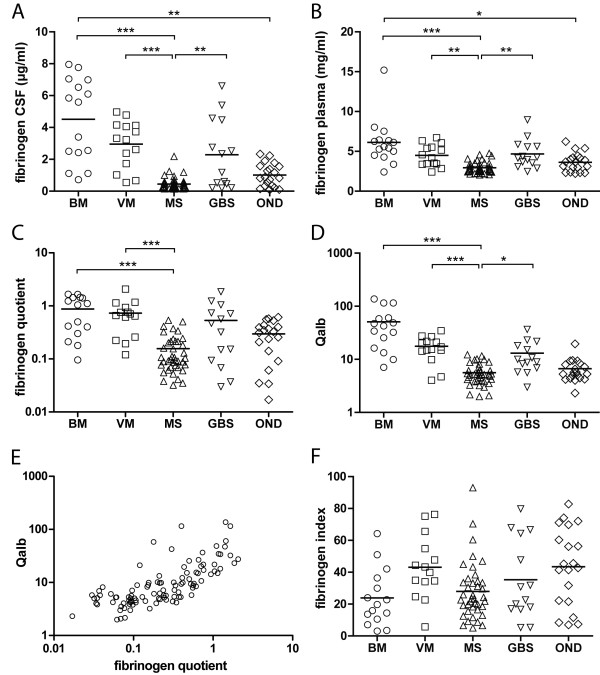Figure 1.
Data plots of fibrinogen concentration in the five investigated patient groups. A: fibrinogen in CSF, B: fibrinogen in plasma. MS patients had significantly lower fibrinogen levels in CSF and plasma as compared to patients with BM, VM and GBS. In addition, OND patients had lower fibrinogen levels in CSF and plasma as compared to patients with BM (bar = mean, * p < 0.05, ** p < 0.01, *** p < 0.001). C: Data plots of fibrinogen quotient (CSF/serum) for the five patient groups, showing significantly lower values in patients with MS as compared to patients with BM and VM (bar = mean, *** p < 0.001). D: Data plots of albumin quotient (Qalb) for the five patient groups. Patients suffering from MS had a significantly lower Qalb compared to those with acute inflammatory diseases of the CNS (BM and VM) reflecting an altered BCSFB status. Qalb was also significantly lower in patients with MS as compared to patients with GBS, reflecting, in this context, an altered brain-nerve barrier status in GBS. However, Qalb did not differ between MS and OND patients (bar = mean, * p < 0.05, *** p < 0.001). E: Scatter plot of albumin quotient against fibrinogen quotient for all patients. Qalb was significantly correlated to fibrinogen quotient (rho = 0.769, p < 0.001). F: Data plot of the fibrinogen index [(CSF fibrinogen/plasma fibrinogen)/Qalb] for the five patient groups. The overall statistical significance between groups was p < 0.012; at the group level there was a non-significant trend towards lower values in patients with BM as compared to patients with VM and patients with OND.

